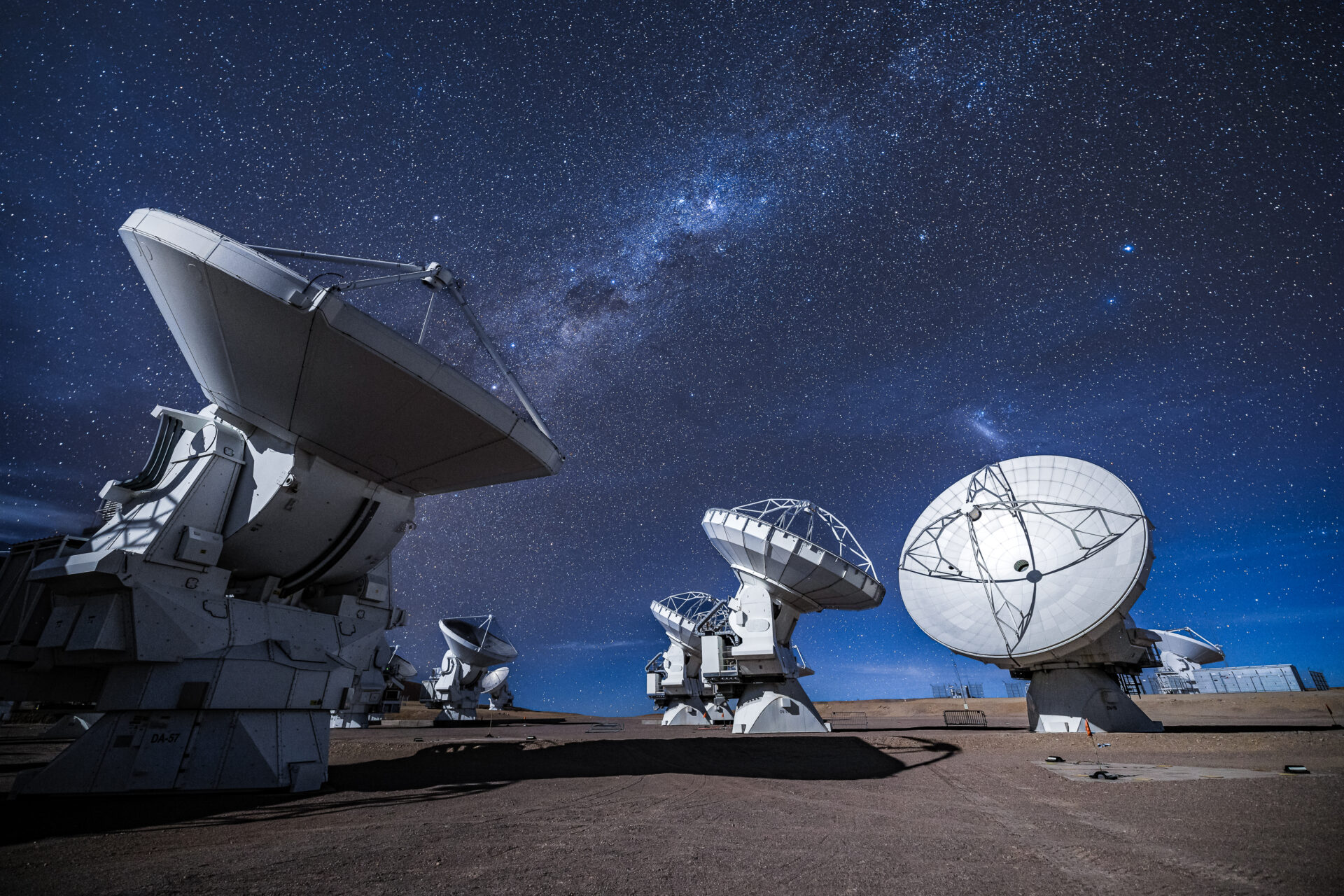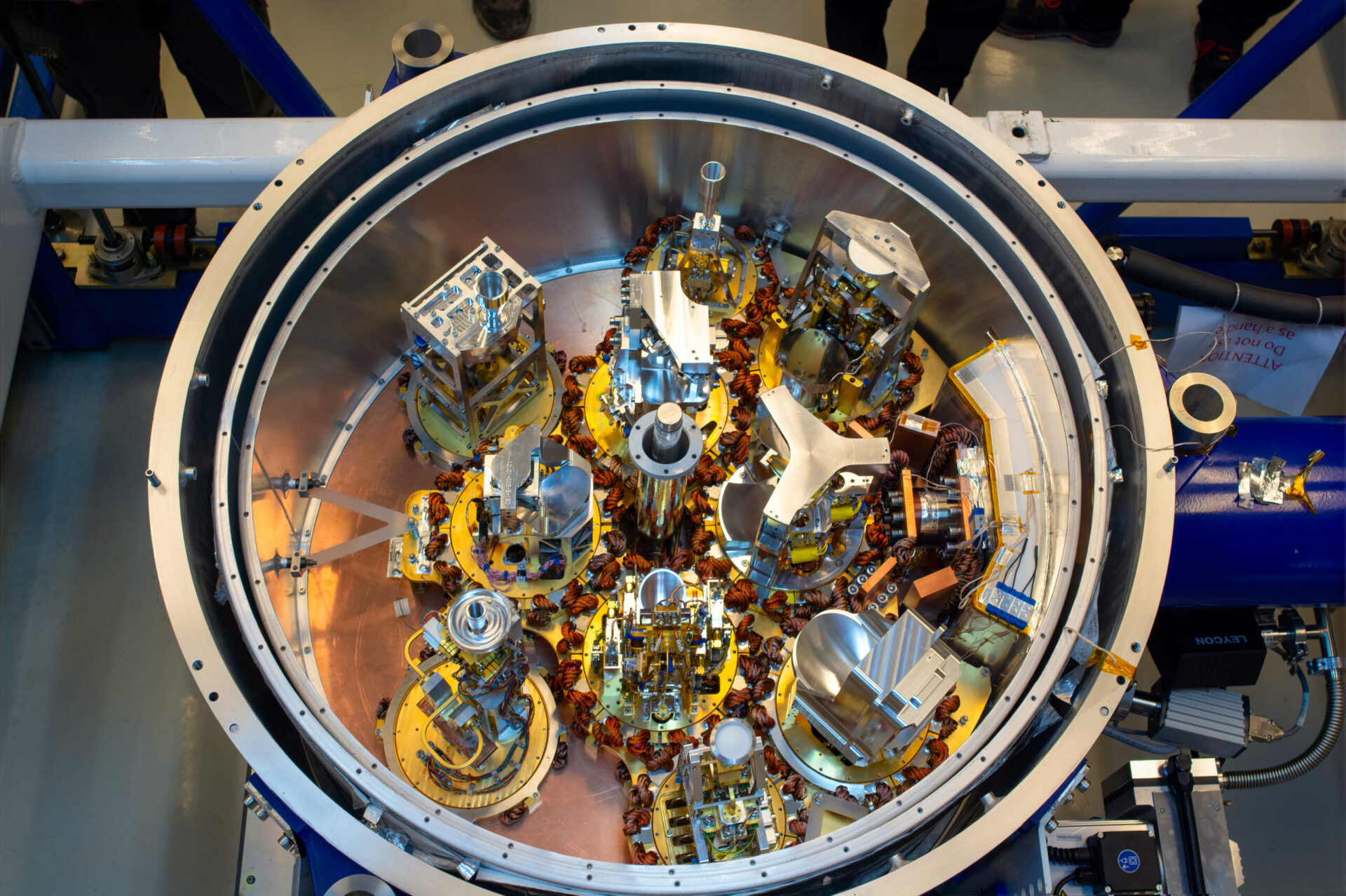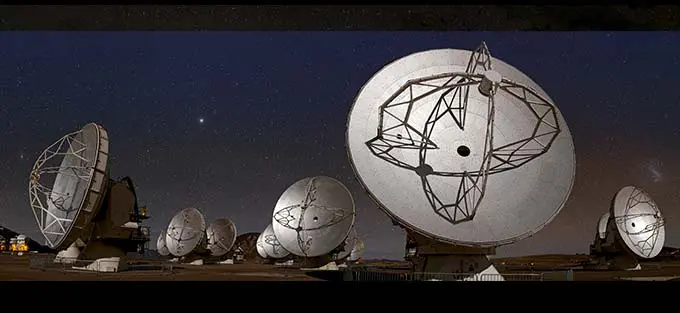ALMA2030 WSU
The Atacama Large Millimeter/submillimeter Array (ALMA) is the largest (sub)mm-wavelength ground-based telescope and has been producing ground-breaking science since it became operational in 2011. However, it was built using technology from the early 2000s to serve the top-level scientific goals defined by the Scientific Community at that time. The ALMA Development Roadmap was released in 2018 to prioritize the development necessary to significantly expand ALMA’s capabilities and enhance its scientific reach in the coming decades. The top priority based on scientific merit and technical feasibility was defined as the broadening of the receiver Intermediate Frequency (IF) bandwidth by at least a factor of two and the upgrade of the associated electronics and correlator. This initiative to implement this priority is now known as the ALMA2030 Wideband Sensitivity Upgrade (WSU).
Benefits of the WSU (2x upgrade)
•
2x increase in available instantaneous bandwidth
•
0.1 km/s spectral resolution at full bandwidth at any ALMA frequency
•
Spectral scan speed increase of 70x for 0.1 km/s resolution in Band 2
•
A factor of (at least) 3 increase in continuum imaging speed
•
A factor of (at least) 2 increase in spectral line imaging speed
•
Access to ultra-high spectral resolution: 10 m/s
Increased instantaneous bandwidth
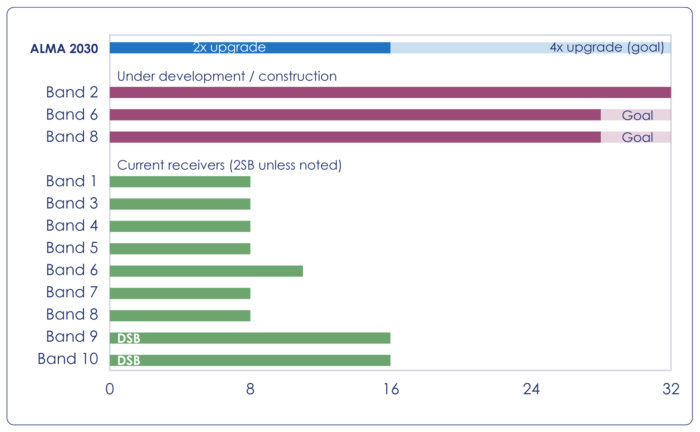
Instantaneous bandwidth per polarization for the current receivers (green) and the WSU (blue). The red bars show the bandwidth of the wideband receivers under construction (Band 2) and development (Bands 6 and 8).
Increased correlated bandwidth
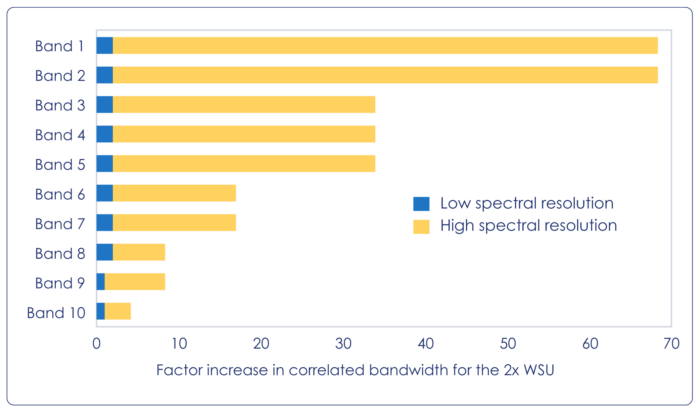
Increase in the instantaneous correlated bandwidth with the 2x bandwidth WSU for low spectral resolution (blue) and high (0.1 km/s) spectral resolution (yellow). Most receiver bands will see more than an order of magnitude increase in the correlated bandwidth at high spectral resolution.
